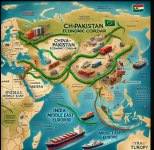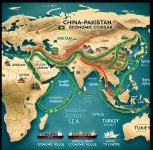Dalit
Elite Member
- Mar 16, 2012
- 27,972
- 44,778
- Country of Origin

- Country of Residence

I came from a business family from Pakistan and settled in the U.S. with extended family in Dubai, Canada, and the UK; the UK branch of the family is very well-known as my grandfather lived there before the partition and moved his brothers there to establish several businesses.
We own and operate plazas, gas stations, apartment buildings, and fast-food restaurants in the States. My father sold many assets back in Pakistan to start this in the 1980s. I was given partial control 15 years ago. I turned it into a family office, connected with doctors and other like-minded individuals, and started a private equity fund (also Family Offices) and risk management business.
Bajwa was the reason why CPEC didn't live upto its potential. Incompetent Asim Munir is now following in the same footsteps. It is all falling apart in Pakistan.
Pakistan is an IMF client at best. Pakistan is drowning in colossal debt. All neighboring countries are pulling ahead.








